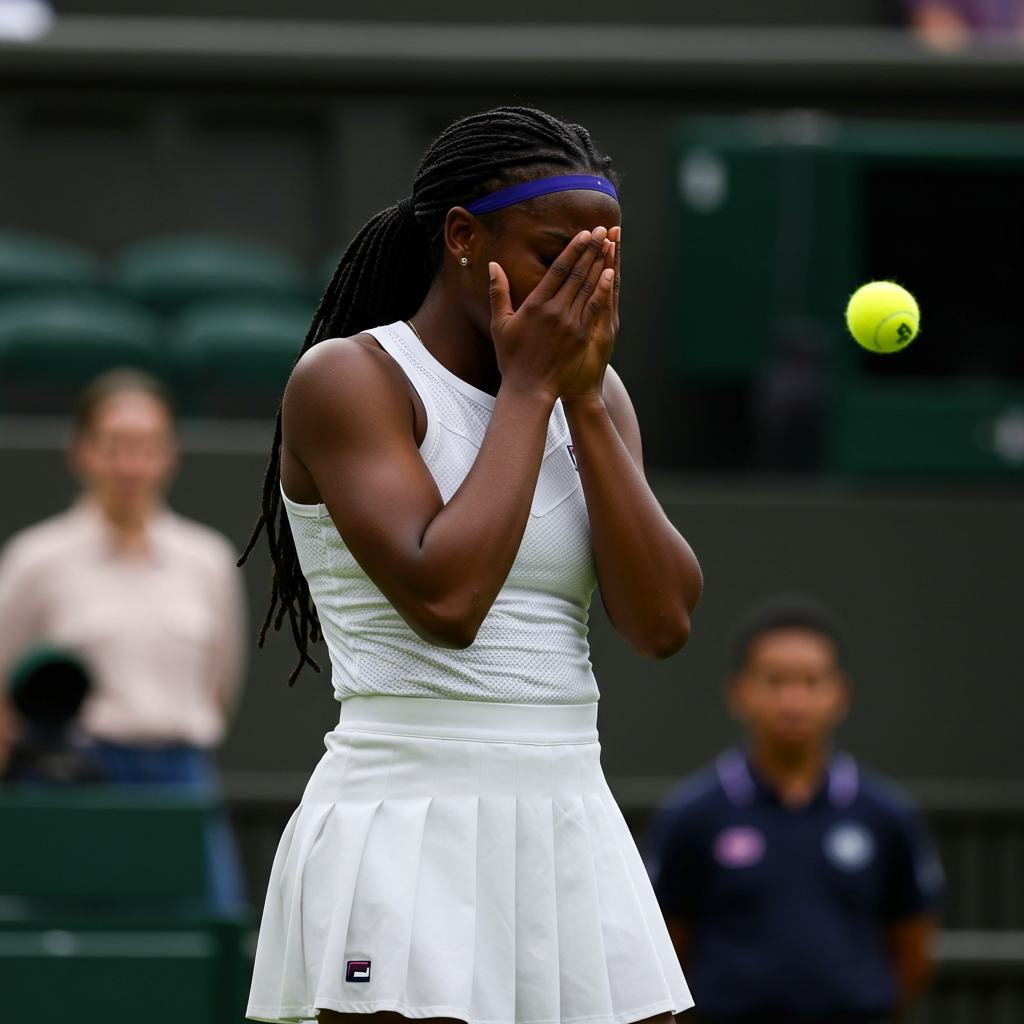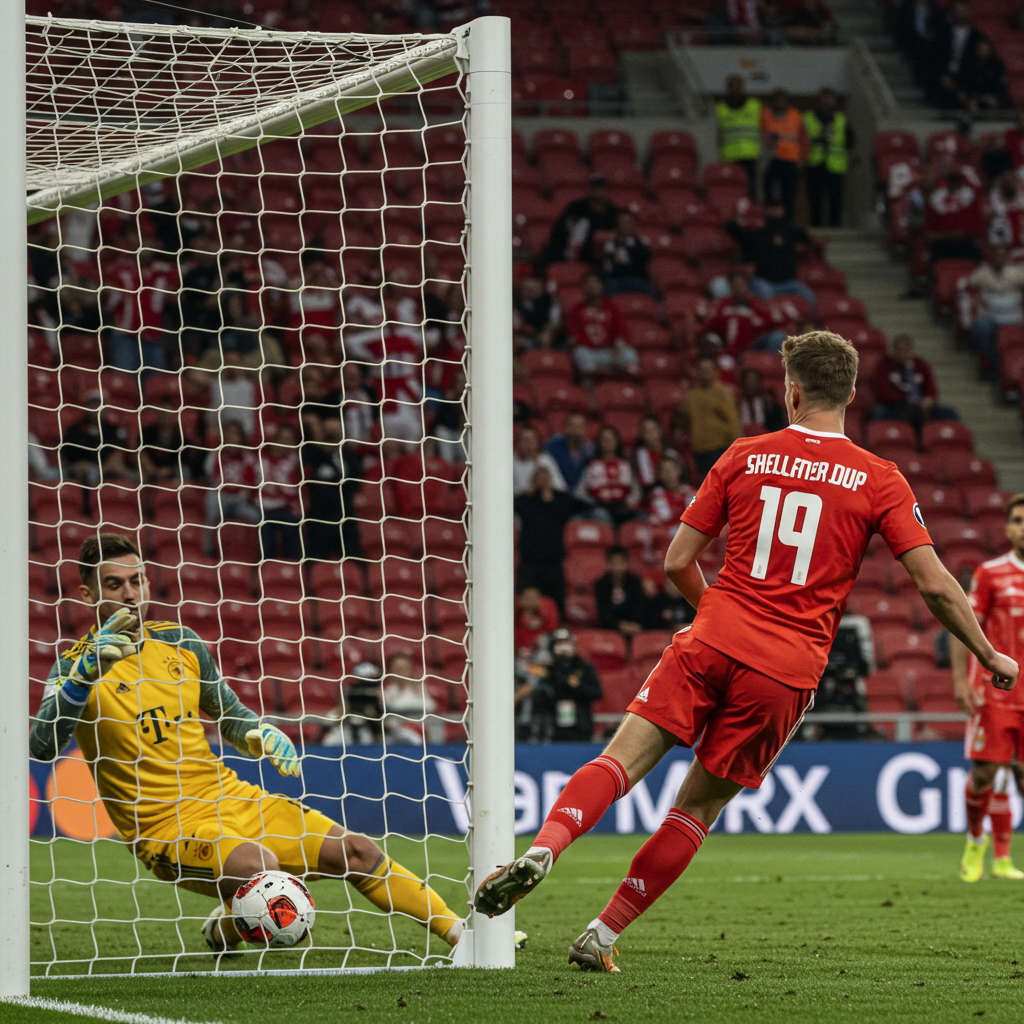The grass courts at wimbledon are steeped in tradition, yet they consistently deliver moments of unexpected drama. This year’s championships have been particularly unpredictable, marked by a wave of high-profile exits early in the draw. Among the most significant departures was that of American star Coco gauff, whose early loss sent shockwaves through the tournament on a chaotic Tuesday. Her defeat highlighted a day of surprising results, leaving many searching for explanations in the rapidly changing landscape of the competition.
Gauff, recently crowned French Open champion, entered Wimbledon as a strong favourite. However, her campaign ended abruptly in the first round. She was defeated by Ukraine’s Dayana Yastremska in a match on No. 1 Court that concluded with a score of 7-6 (7-3), 6-1. The contest lasted just 80 minutes, a swift end for a player many expected to challenge for the title.
Unprecedented Upsets Shake the Draws
Gauff’s unexpected exit was far from an isolated event; it occurred amidst a remarkable series of upsets across both the men’s and women’s draws. This year’s Wimbledon has already earned a reputation for being uniquely unpredictable. Data reveals an unprecedented scale of early departures among the top players.
Prior to Gauff’s match, several other high seeds had already tumbled out. This included third seed Jessica Pegula, who lost decisively to Elisabetta Cocciaretto. Fifth seed Zheng Qinwen and ninth seed Paula Badosa also saw their campaigns end in the first round. The volatility wasn’t confined to the women’s side. Top-10 seeds like Alexander Zverev, Lorenzo Musetti, Holger Rune, and Daniil Medvedev also fell early.
In total, eight top-10 seeded players (four men and four women) were eliminated in the first round. This marks the first time in the Open Era such a high number of top-10 seeds have been knocked out so early in a single Grand Slam tournament. This statistic solidifies the 138th edition of Wimbledon as perhaps the “most unpredictable yet.” Even a Wimbledon board member like Tim Henman expressed satisfaction with the high number of upsets, viewing it as a sign of significant “strength in depth” and the “fine margins” now present in professional tennis.
Searching for Answers After an Early Exit
Following a day defined by stunning losses, attention turned naturally to the factors contributing to this widespread unpredictability, particularly Gauff’s defeat. Players themselves offered various theories. The demanding nature of the grass surface is a constant challenge. Unlike clay, grass demands quick reactions, emphasizes the serve, and features a lower, often unpredictable bounce.
Adding to the technical difficulty is the practical reality of the tour calendar. A significant portion of the professional season leading up to Wimbledon is played on clay courts, culminating in the French Open. The transition from clay, which requires different movement, strategy, and ball-striking, to the fast grass surface in a short window is notoriously difficult. Players who go deep in Roland Garros face a particular challenge in quickly adapting their game. Coco Gauff herself noted that Wimbledon is “the most prone to have upsets because of how quick the turnaround is from clay.” Few players seem to have truly mastered this shift consistently.
Environmental factors also played a role. Unseasonably warm conditions were frequently mentioned by players. Intense heat can impact endurance and potentially alter court conditions. Another practical challenge cited was housing. Many players rent local homes, which often lack air conditioning, potentially leading to uncomfortable nights and poor sleep quality crucial for peak performance.
Analyzing the Match and Game
Gauff’s loss to Dayana Yastremska saw moments of tight competition, particularly in the first set. Gauff initially went down a break but managed to recover, leveling the score after Yastremska double-faulted while serving for the set at 5-4. However, in the subsequent tie-break, Gauff couldn’t maintain momentum. Yastremska secured the set with a powerful forehand on her second set point.
The second set saw a significant decline in Gauff’s performance. She appeared tentative and struggled with consistency, notably accumulating multiple double faults. Yastremska broke serve in the opening game with a clever drop shot following a Gauff double fault. Two more double faults from Gauff contributed to another break for Yastremska in the fifth game. Gauff’s struggles were highlighted by her ninth double fault of the match while serving at 5-1 down. Yastremska converted her first match point when Gauff hit a weak backhand that landed short.
Fan and analyst discussions following the match often focused on specific technical aspects of Gauff’s game potentially vulnerable on grass. Critiques frequently mentioned her forehand grip and the effectiveness of her second serve under pressure. Some also suggested Gauff might have benefited from more grass court warm-up tournaments. Her only grass preparation match resulted in a loss to Xinyu Wang in Berlin, where she also struggled with double faults and unforced errors. While one former player suggested this loss could be a “blessing in disguise” to fuel her Wimbledon preparation, it clearly didn’t provide the desired momentum.
Contrasting Form and Facing Pressure
Coco Gauff’s early Wimbledon exit stands in stark contrast to her recent impressive performances. Just weeks prior, she showcased formidable form at the French Open, where she reached the semi-finals and ultimately won the title by defeating Aryna Sabalenka in the final. This built on previous Grand Slam success, including winning the US Open title in 2023. Her consistent deep runs in other major tournaments underscore her status as an elite competitor.
This history highlights the significant mental challenge at the highest level. Gauff herself has spoken about the unique pressures faced by young, high-profile athletes. She noted how factors beyond ranking, like nationality and past wins, can intensify external expectations. Navigating this pressure while performing on the world’s biggest stages is a constant battle, potentially impacting performance on any given day.
Furthermore, Gauff burst onto the scene at a remarkably young age, famously reaching the fourth round of Wimbledon at just 15 after beating tennis legend Venus Williams. Her career since then, including winning her first WTA title at 15, has demonstrated resilience and rapid improvement. While an early Grand Slam exit is disappointing, Gauff possesses the experience and determination to learn from setbacks. For Gauff, this loss marks only the third instance in the Open Era where the reigning French Open women’s singles champion has lost in the first round of Wimbledon, following Justine Henin in 2005 and Francesca Schiavone in 2010.
Frequently Asked Questions
Why did so many top seeds, including Coco Gauff, struggle at Wimbledon?
Several factors likely contributed to the numerous upsets at this year’s Wimbledon. A major reason is the challenging transition from the clay court season to the fast grass surface, especially for players who reached the later stages of the French Open. Environmental factors like unseasonably warm weather and potential sleep disruption from houses without air conditioning were also mentioned. Additionally, observers pointed to specific technical aspects of players’ games, like second serves or adapting to the grass bounce, alongside discussions about pre-tournament preparation schedules.
How has Coco Gauff performed recently leading up to this Wimbledon?
Coco Gauff had been in outstanding form leading up to Wimbledon, notably winning the French Open title just weeks prior, defeating Aryna Sabalenka in the final. She also won the US Open in 2023 and reached deep stages in other recent tournaments like Madrid and Rome. Her consistent success in major tournaments demonstrated her elite level of play, making her early exit at Wimbledon particularly surprising.
What aspects of Gauff’s game were discussed after her Wimbledon exit?
Following her loss to Dayana Yastremska, fan and analyst discussions frequently highlighted potential technical vulnerabilities on the grass surface. Specific points of critique often raised included her forehand grip and the consistency and effectiveness of her second serve, particularly under pressure moments in the match where she accumulated several double faults. There was also commentary on the importance of dedicated grass court preparation given the speed and unique demands of the surface, noting her limited warm-up play on grass.
Moving Forward
Coco Gauff’s early departure from Wimbledon is undoubtedly a disappointment for her and her fans. However, the nature of Grand Slam tennis, especially the unique challenge of the Wimbledon grass and the “topsy-turvy” environment seen this year, means upsets are an inherent part of the narrative. Factors from difficult surface transitions and environmental challenges to the immense pressure of the moment all play a role in creating this unpredictable landscape where no outcome feels certain.
For Gauff, a player with proven talent, recent Grand Slam success, and a history of overcoming challenges, this loss will likely serve as a valuable learning experience. Analyzing the specific difficulties she faced, whether technical adjustments needed for grass or handling the pressures, will be crucial for her preparation for upcoming tournaments. While this Wimbledon chapter ended sooner than expected for the young American star, her place among the game’s elite remains secure, and her potential for future Grand Slam success is undiminished.


